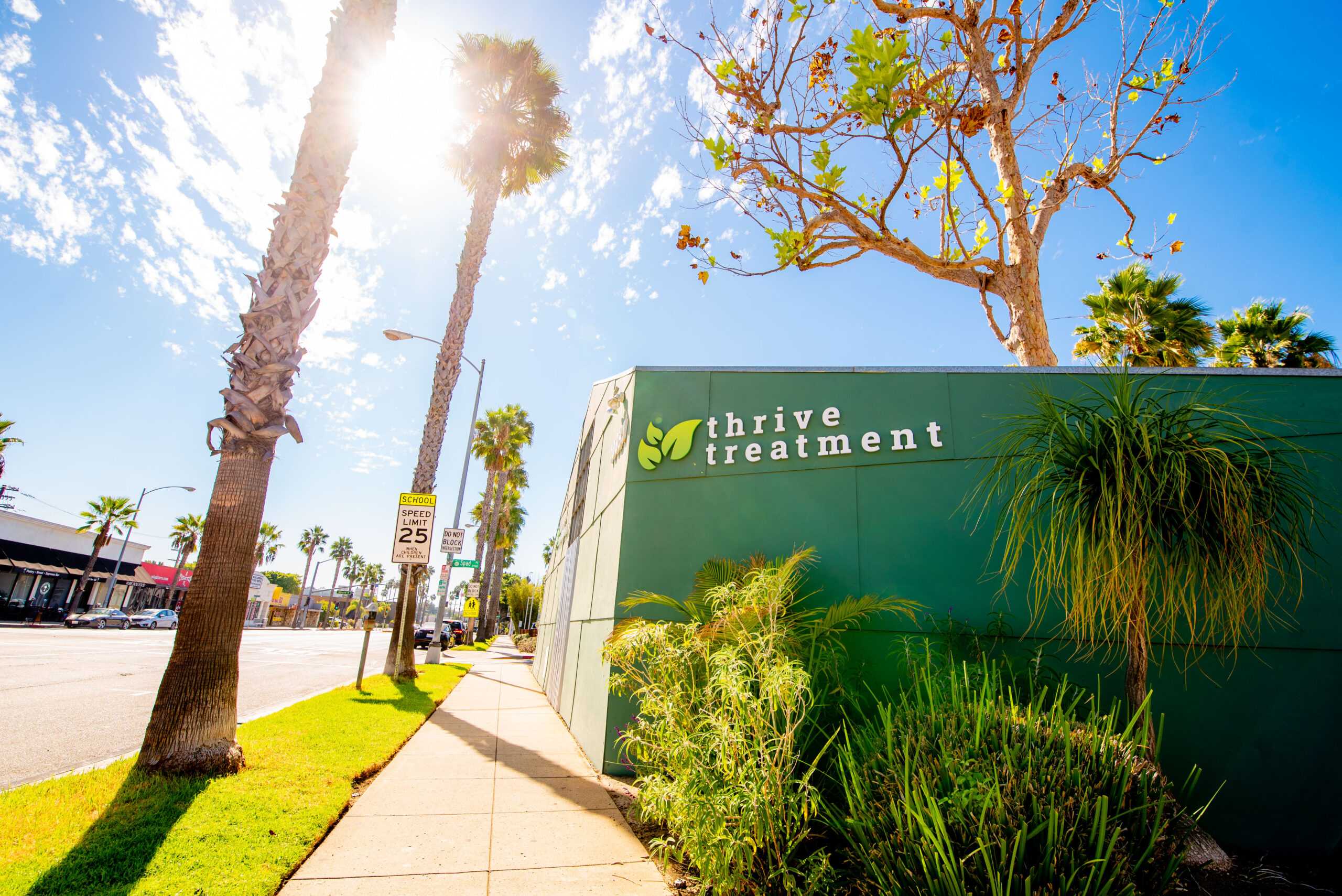The biggest key to staying sober after treatment is support. With the help of family and friends who are supportive of your recovery, you are empowered and motivated to continue on the path to lasting sobriety. 12-step programs are a perfect example of how a strong support system goes a long way in helping newly recovering addicts stay on the road to recovery. This article will clearly define what a 12-step program is and how a 12-step group fits into an addict’s individualized recovery plan.
Do you or a loved one need help in overcoming addiction? Thrive Treatment offers Santa Monica drug treatment programs featuring evidence-based programs and the compassionate support you need to get and stay sober.
Call us today to find out more!
What is a 12-Step Program?
If you are starting your recovery journey, you no doubt have heard about 12-Step groups.
In simple terms, 12-step programs serve as a roadmap of sorts to help people address and overcome their addiction to substances. These groups are comprised of peers who struggle with addiction, and within the group, people provide support, encouragement and share their stories of their struggles and how they are overcoming their substance use. The support people receive happens through group meetings as well as individual work with a sponsor who has considerable sobriety and is helping others achieve that goal.
The origins of the 12-step group can be traced back to 1935 with the formation of Alcoholics Anonymous. Since its formation, the template created by Bill Wilson has been adopted by other 12-Step groups such as Narcotics Anonymous (CA), Heroin Anonymous (HA), and Crystal Meth Anonymous (MA), among other groups. 12-step support groups aren’t just for substance abuse; they are also used for people with behavioral addictions such as gambling, sex, and overeating.
What are the Benefits of a 12-Step Program?
12-step programs provide tremendous benefits that help people stay on the path to recovery. The most obvious benefit is a strong sense of belonging. We are social creatures by nature and need to feel a connection with others. 12-step groups are comprised of others who are on similar paths to sobriety. By sharing stories and encouraging others, those new in recovery feel a strong sense of community and fellowship. Within this community, there is also a strong sense of accountability. Within groups, people are expected to work with sponsors and on their individual recovery programs.
Another benefit of 12-step groups is the availability of meetings. In most towns and cities, there are multiple meetings that are available and offered at different times of the day. This availability removes the excuse that people “don’t have time” to attend a 12-step group. Most importantly, a 12-step group gives people the opportunity to help others in need. When people help others, it boosts self-esteem and bolsters their sense of gratitude.
Are 12-Step Programs for Everyone?
12-Step programs are very effective and have helped countless numbers of addicts find sobriety. However, these programs are not for everyone. 12-step groups have strong religious and spiritual foundations, especially with the concept of a “higher power” prevalent in 12-step programs. The emphasis on the spiritual may turn some people away and make them extremely reluctant to join this type of group. Also, this model emphasizes one’s powerlessness against the disease of addiction. This may deter women from joining 12-step groups since women tend to use substances to numb themselves from past trauma and abuse.
Additionally, 12-step groups focus on group participation—and this may not sit well with those who are more introverted and withdrawn. Also, those with co-occurring mental disorders may not benefit from -step groups because talking about their substance use in a group setting may worsen their condition.
How to Find a 12-Step Program in Santa Monica
A 12-step program may provide the guidance and support you need to make sobriety a reality if you are ready to take your first steps on the road to recovery. Many drug rehab programs offer 12-step programs, providing a strong foundation to build your recovery upon.
Call Thrive Treatment today if you are looking for 12-Step programs and outpatient treatment in Santa Monica. Our Southern California treatment facility prides itself on offering individualized treatment programs drawing from a variety of evidence-based services.
Our experienced staff will work with you every step of your recovery journey and give you the tools and support you need to find lasting recovery. Call us today and begin the healing process.




